Balancing abilities tend to decline with age, presenting challenges to daily activities and increasing the risk of falls among individuals over 60. Recognizing the significance of balance for this age group is crucial for maintaining independence and ensuring a high quality of life. This article introduces eight simple exercises to enhance stability and reduce fall risks in older adults. Through dedicated practice, these exercises can lead to substantial improvements in balance, offering a pathway to a safer and more active lifestyle. Empowering those over 60 with the tools to improve their balance is a step towards fostering longer, healthier lives.
Contents
Toe Lifts and Heel Raises

Toe lifts and heel raises are foundational exercises that target the lower leg muscles, crucial supporters in the quest for improved balance. These simple movements can significantly enhance stability by strengthening the calves and ankles, providing a solid base from which the body can maintain and correct posture. Practitioners are advised to start by standing behind a chair, using it for support, and slowly raising their heels before gently lowering them back down. This exercise should be repeated in sets to gradually increase the number of repetitions as strength and balance improve.
Beyond improving muscle strength, toe lifts and heel raises promote joint flexibility, particularly in the ankles, which is essential for navigating various terrains and preventing falls. As individuals become more comfortable with these exercises, they can challenge themselves further by performing them without the support of a chair or by increasing the speed of their movements. Consistency in practice is key to reaping the maximum benefits, and these exercises can be easily incorporated into daily routines, thereby making the journey towards better balance both achievable and enjoyable.
Single-Leg Stands
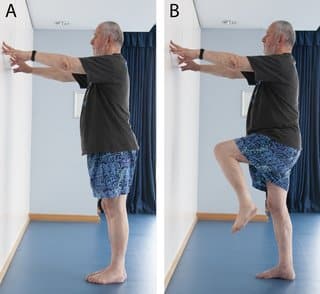
Single-leg stands focus on improving balance by strengthening the core and leg muscles, which are essential to maintaining stability. This exercise begins with standing behind a chair for support, then slowly lifting one foot off the ground and holding the position for as long as possible. Initially, it might be challenging to maintain the stance for more than a few seconds. Still, with regular practice, the duration can significantly increase, reflecting improvements in both balance and confidence. The ultimate goal is to perform this exercise without support, fully relying on one’s body to sustain balance.
Tracking progress is an important aspect of single-leg stands, providing motivation and tangible evidence of improvement. Individuals are encouraged to keep a log of how long they can hold the position with each leg, aiming to extend the time with each practice session. Additionally, this exercise can be varied by closing the eyes or turning the head side to side, further challenging the body’s balance systems and accelerating the development of core strength and stability. These incremental challenges improve physical balance and enhance mental focus and concentration.
Walking Heel to Toe
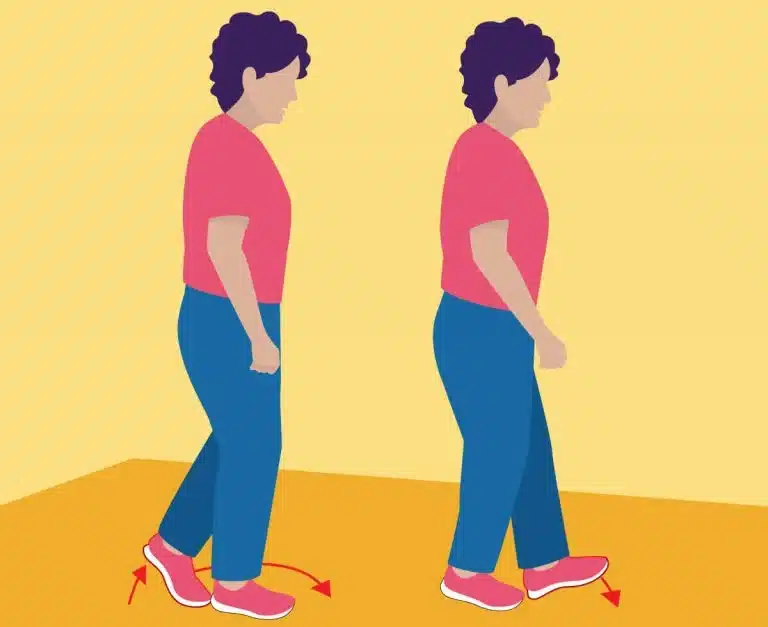
Walking heel to toe mimics the actions of a tightrope walker, a fun and effective way to enhance balance and coordination. This exercise requires individuals to place the heel of one foot directly in front of the toes of the opposite foot as if walking along a straight line. Each step should be taken intentionally, focusing on maintaining a straight posture and aligning each foot accurately. Initially, practicing this exercise alongside a wall or using a chair for support can help ensure safety and confidence as balance improves.
Individuals can experiment with variations such as walking along an actual line or closing their eyes to increase the difficulty and further benefit balance. These modifications require greater concentration and engagement of the balance systems, accelerating stability improvements. Regular walking heel to toe can significantly impact one’s ability to navigate complex terrains and avoid falls, contributing to greater independence and quality of life in later years.
Sideways Walking
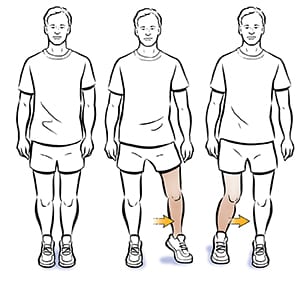
Sideways walking, or lateral movement is an excellent exercise for strengthening the muscles on the sides of the hips and legs, areas often neglected in traditional forward-oriented movements. This exercise involves standing with feet together, then stepping to the side with one foot, followed by the other, to move laterally. Keeping the movements slow and controlled ensures safety and maximizes muscle engagement, which is crucial for stabilizing the pelvis and improving overall balance. Using a wall or chair for support can help maintain balance, and gradually rely less on these aids as confidence and strength build.
The benefits of sideways walking extend beyond muscle strengthening; it also enhances the ability to shift weight from one leg to another, a fundamental aspect of maintaining balance while in motion. This ability is particularly important in everyday situations, such as navigating through crowds or adjusting to uneven surfaces, reducing the risk of falls. As practitioners become more adept at sideways walking, they can increase the challenge by adding resistance bands around the ankles or increasing the speed of their steps, further promoting balance and agility.
Backward Walking
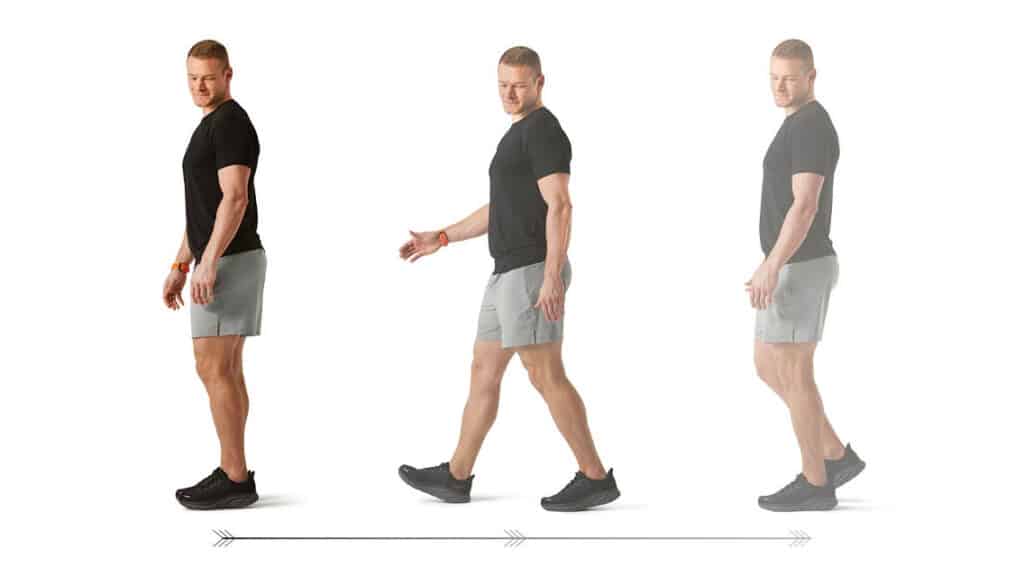
Backward walking challenges the body’s balance systems, forcing the engagement of different muscle groups and requiring a heightened sense of spatial awareness. This exercise involves taking slow, deliberate steps backward, initially in a safe, unobstructed area. The reverse motion strengthens the legs and core muscles from a different angle, promoting balance and providing a novel stimulus for the neuromuscular system. Starting with shorter distances and gradually increasing as comfort and stability improve is key to gaining the most benefit from this exercise.
The cognitive benefits of backward walking are noteworthy. Navigating space without visual cues demands greater concentration and mental processing, thereby enhancing cognitive function alongside physical balance. This dual benefit underscores the importance of incorporating varied movements into a balanced training regimen, ensuring the body and mind are engaged and challenged. As individuals gain confidence in their ability to walk backward safely, they can further challenge themselves by increasing the distance or adding gentle turns, making the exercise more complex and beneficial.
Sit-to-Stand Exercises
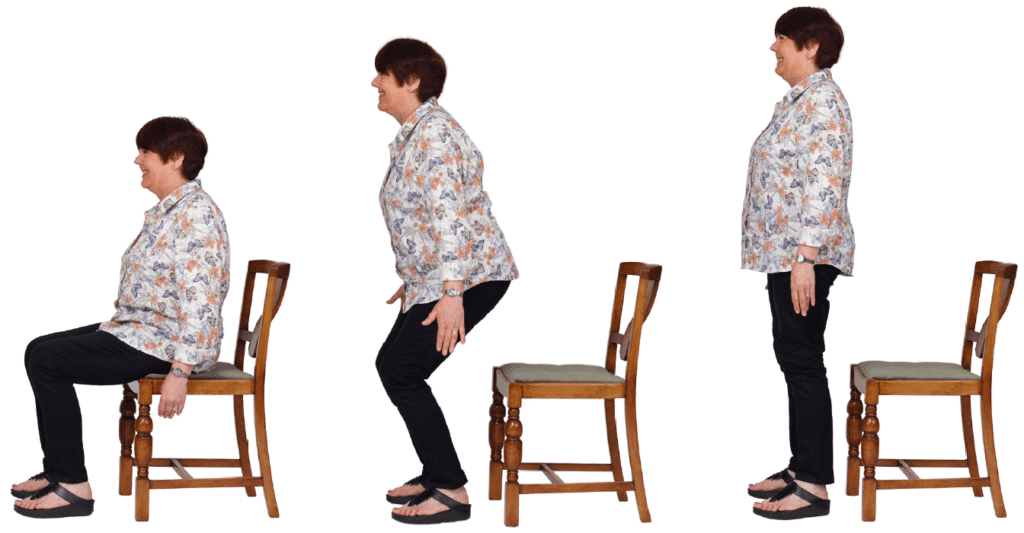
Sit-to-stand exercises are fundamental for building strength in the legs and core and essential to a stable and balanced stance. This exercise starts with sitting in a chair and then standing up without using the hands for support, focusing on using the leg and core muscles to rise. Initially, the movement may require some momentum or assistance, but the goal is to progress to a controlled rise, which indicates stronger muscles and improved balance. Repeating this exercise in sets, focusing on smooth, controlled movements, enhances its effectiveness.
The core-strengthening aspect of sit-to-stand exercises is particularly important for balance. A strong core provides the necessary support for the upper body, reducing the sway that can lead to falls. Encouraging daily practice of this exercise can significantly improve functional balance, making everyday tasks such as standing from a seated position or climbing stairs safer and easier. For added challenge and balance training, individuals can practice standing on one leg after rising, further enhancing stability and strength.
Balance on an Unstable Surface
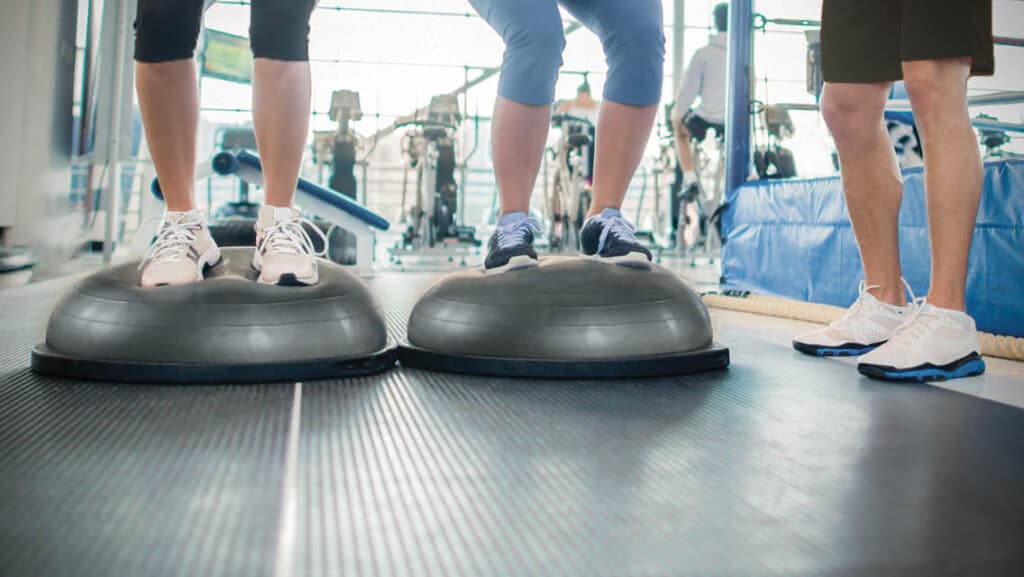
Balancing on an unstable surface, such as a cushioned mat, challenges the body’s balance systems in a unique way, simulating conditions one might encounter in daily life. This exercise requires standing on the soft surface with feet hip-width apart and maintaining balance as the surface shifts. The instability forces the engagement of a wide range of muscles, particularly in the ankles and core, which are critical for stabilizing the body. Starting with short durations and having a sturdy object nearby for support is essential for safety and confidence.
Balancing on an unstable surface strengthens physical muscles and enhances proprioception, the body’s ability to perceive its position and movement in space. Improved proprioception contributes significantly to better balance and agility, reducing the likelihood of falls. As individuals become more comfortable with this exercise, they can increase the difficulty by closing their eyes or performing balance challenges, such as lifting one foot slightly off the surface, thereby continuously advancing their balance skills.
Tai Chi or Yoga
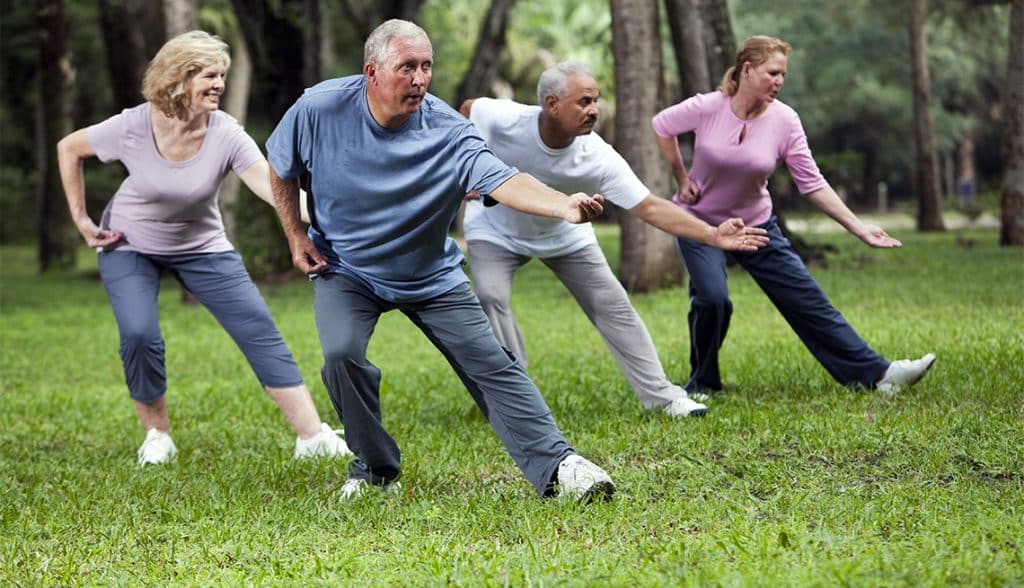
Tai Chi and Yoga are mind-body practices that profoundly benefit balance and well-being. These ancient disciplines emphasize slow, controlled movements, deep breathing, and mental focus, all essential for improving balance. Starting with basic poses or forms, practitioners can gradually build their strength, flexibility, and proprioception, enhancing stability and reducing the risk of falls. Tai Chi and Yoga are adaptable to all fitness levels, making them accessible and beneficial for individuals over 60.
The mind-body connection cultivated through Tai Chi and Yoga practice goes beyond physical balance, promoting mental calmness, focus, and a sense of grounding. These aspects are particularly beneficial as they contribute to a more centered and balanced approach to daily life, reducing stress and improving overall quality of life. Encouraging participation in local classes or utilizing online resources can provide guidance and community support, making the practice of Tai Chi and Yoga a rewarding and enriching part of one’s journey to improved balance.
Final Thoughts
Improving balance after 60 is achievable and can be enjoyable and enriching. The exercises outlined in this article, from toe lifts and heel raises to the mindful practices of Tai Chi and Yoga, offer a comprehensive approach to enhancing stability, strength, and flexibility. Consistency in practice is key to seeing improvements, as is a willingness to challenge oneself progressively. By integrating these exercises into daily routines, individuals can look forward to better balance and a greater sense of confidence and freedom in their movements. Encouraging readers to share their progress and experiences can foster a community of support and inspiration, highlighting the collective journey towards a balanced, active life.